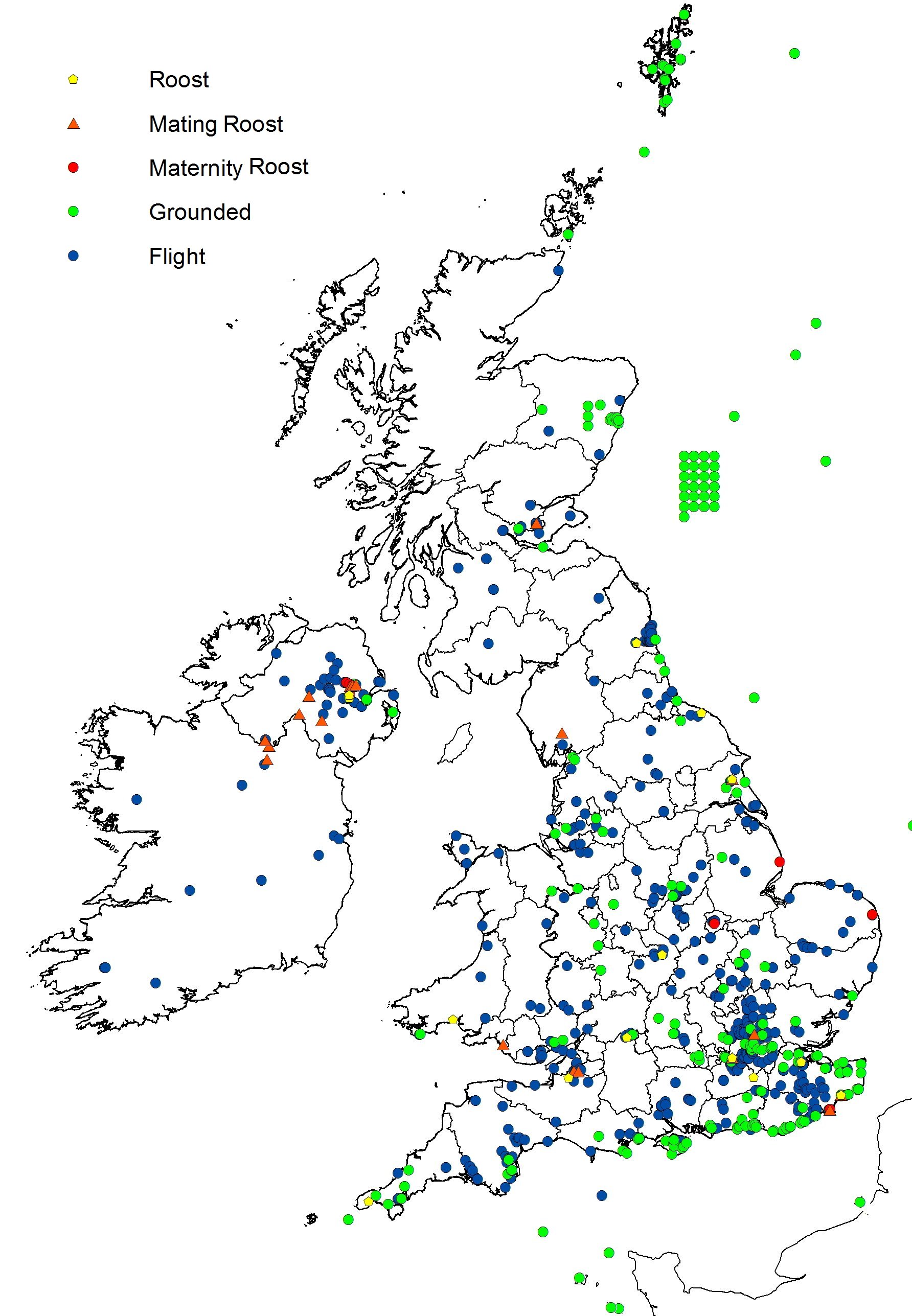On the inaugural night of 25 July the recorder was located in a garden by an old clay-lump cottage along Green Lane. All three pipistrelles were recorded including the scarcest, Nathusius' Pipistrelle. There have been fewer than 850 British records of this bat (fide http://www.nathusius.org.uk) which was first reorded in Norfolk just 15 years ago; it's known UK distribution is plotted here (copied below).
 |
| All known UK records of Nathusius' Pipistrelle Pipistrellus nathusi (source: http://www.nathusius.org.uk/Distribution.htm) |
The following evening, St. Peter's Church produced six confirmed species of bat. The Barbastelle was the highlight. Its UK population is estimated to be c. 5000 and decreasing, and it is considered Near Threatened internationally.
 |
| Barbastelle Barbastella barbastellus UK distribution (source: http://jncc.defra.gov.uk/publications/jncc312/species.asp?FeatureIntCode=S1308) |
Serotine was present once again. The other species were Noctule, Common and Soprano Pipistrelles and Brown Long-eared Bat. Nathusius' Pipistrelle may have been recorded too.
 |
| Bat detector @ St Peter's Church, Rocklands |
No comments:
Post a Comment